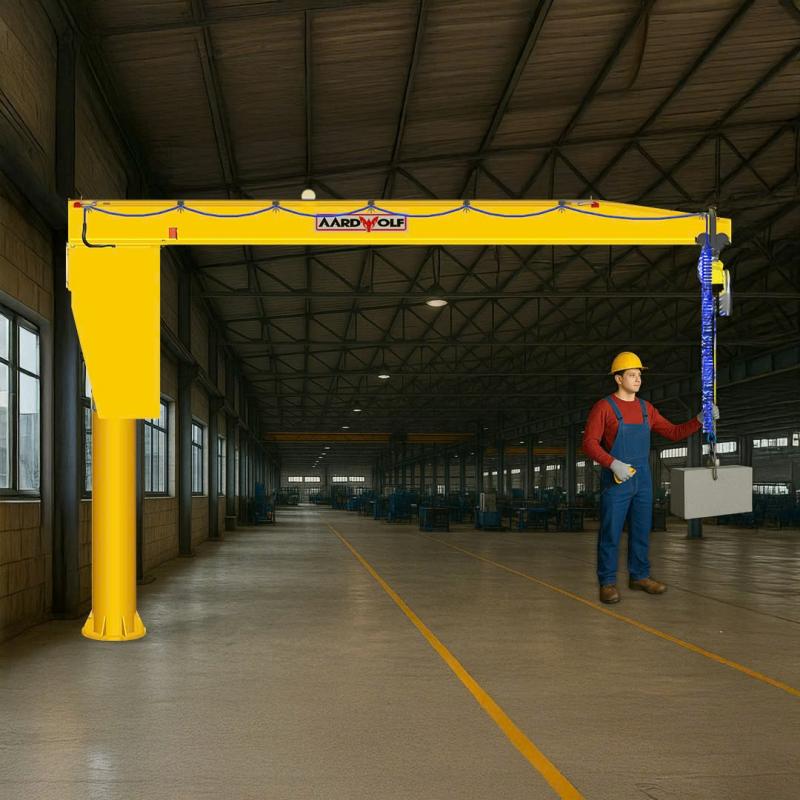



Introduction
Yet, despite the buzz around automation, one piece of lifting equipment continues to prove indispensable: Jib Cranes. Whether it's a freestanding jib crane in a logistics hub or a wall mounted jib crane in a fabrication workshop, these cranes complement automation rather than compete with it.
Understanding Jib Cranes in Modern Facilities
What Are Jib Cranes?
Jib Cranes are compact, versatile lifting solutions featuring a horizontal jib or boom that supports a lifting device. They can rotate to transfer loads efficiently and come in various types, including:
Freestanding Jib Cranes
Wall Mounted Jib Cranes
Ceiling Mounted Jib Cranes
Articulating Jib Cranes
Pillar Jib Cranes
Their primary advantage lies in point-to-point material handling, especially in confined or task-specific work areas.
Trends of Jib Cranes
Discover more at Jib Cranes Trends
Why Jib Cranes Thrive Amid Automation
1. Precision Support for Manual and Semi-Automated Tasks
Even the most advanced facilities still require human oversight. Jib Cranes enhance ergonomic lifting in stations that require:
Machine loading/unloading
Parts assembly
Maintenance support
Quality control handling
For instance, an articulating jib crane provides operators with flexible arm reach around complex machinery, something a fixed robotic arm might struggle with.
2. Enhancing Automated Workflows
In integrated setups, Jib Cranes serve as bridge systems between automation points:
Moving components from AGVs to conveyor systems
Supporting tool changes in CNC areas
Handling sensitive materials during packaging
Boost Efficiency with a Jib Crane in smart setups with this step-by-step installation guide.
Use Cases: Where Jib Cranes Still Dominate
A. Small Batch Manufacturing
When batch sizes vary and workflows are dynamic, Jib Cranes offer unmatched flexibility. In contrast, rigid robotic systems often lack the reconfigurability needed in high-mix environments.
B. Assembly Lines with Ergonomic Demands
Jib Cranes allow workers to lift heavy items with minimal strain, making them ideal in automotive and heavy-duty assembly tasks. A pillar jib crane placed between stations can dramatically reduce worker fatigue and injury risk.
C. Maintenance and Downtime Support
During routine repairs or unexpected maintenance, a ceiling mounted jib crane can quickly move equipment or remove heavy parts without waiting for mobile cranes or forklifts.
Comparing Jib Cranes with Automated Lifting Systems
| Feature | Jib Cranes | Robotic Arms | Davit Arms |
|---|---|---|---|
| Setup Time | Quick | Moderate-High | Quick |
| Flexibility | High | Low-Moderate | Moderate |
| Cost | Moderate | High | Low |
| Space Efficiency | Compact | Bulky | Compact |
| Ideal Use | Task-specific lifting | Continuous, programmed motions | Light-duty lifting |
Jib Crane Comparison – Full breakdown available
Models for Modern Warehouses
Explore Articulated Jib Cranes Wall-mounted – Best for space-constrained workstations
Wall-mounted Jib Cranes in Your Warehouse – Ideal for assembly and packaging lines
Learn More: Jib Cranes Installation
Details at Jib Cranes Installation
Future-Proofing with Jib Cranes
1. Integration with Smart Sensors
Advanced Jib Cranes now come with load sensors, overload protection, and programmable hoists that link with smart factory dashboards.
2. Modular Crane Systems
Aardwolf’s modular jib crane designs allow users to:
Extend or shorten boom lengths
Rotate 180° to 360°
Add electric or pneumatic hoists
3. ROI and Operational Benefits
Investing in Jib Cranes ensures:
Faster ROI than robotic systems
Reduced injury claims
Lower energy usage compared to full-scale gantry systems
Conclusion
Automation may define the future, but Jib Cranes remain the practical backbone of daily operations across industries. Their adaptability, safety, and ergonomic value make them a strategic investment for manufacturers, warehouses, and logistics centers alike. As the industrial landscape evolves, the right Jib Crane configuration—be it wall-mounted, pillar-style, or articulated—will remain a critical part of smart, efficient, and human-centric workflows.
For more insights into Industrial Jib Cranes in the Future, visit
References
1. How to operate a Jib Cranes safely
3. Over brace jib crane wall mounted
5. Is a Jib Crane a Gantry Crane
6. Articulated Jib Crane Wall Mounted
8. Manual Counterbalance Crane
10. Over Braced Jib Crane Column Mounted
Sign up to receive the latest info on new Aardwolf products, special offers and more.
By signing up you agree to receive emails from Aardwolf with news, special offers, promotions and other information. You can unsubscribe at any time.